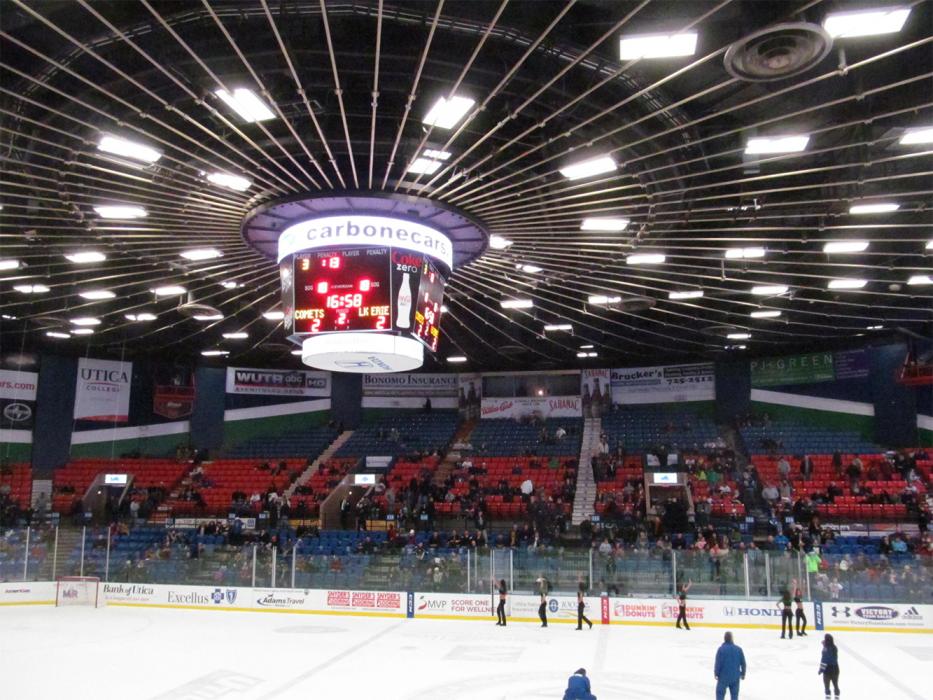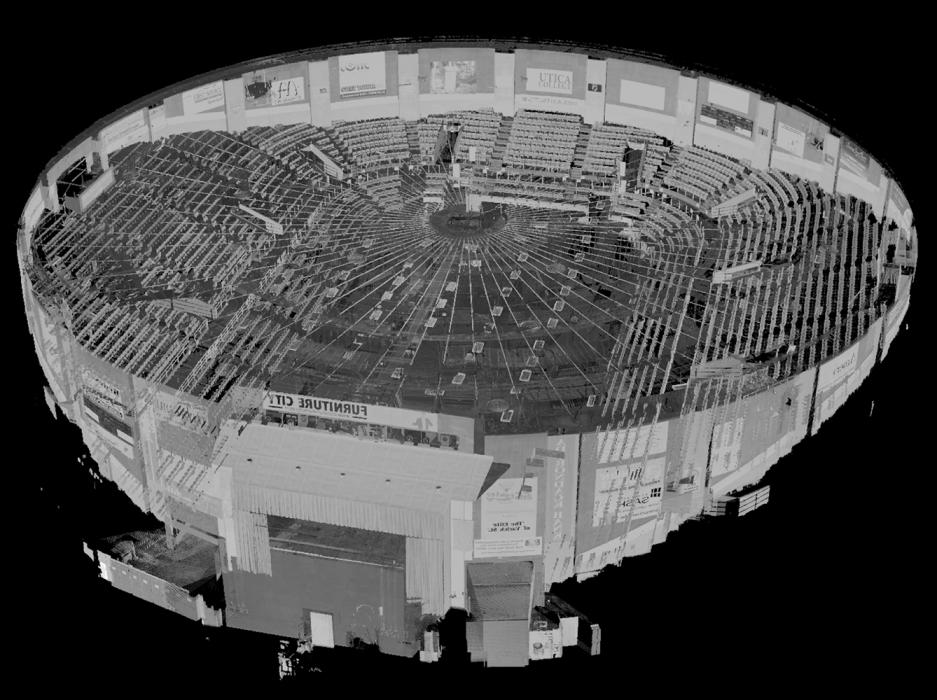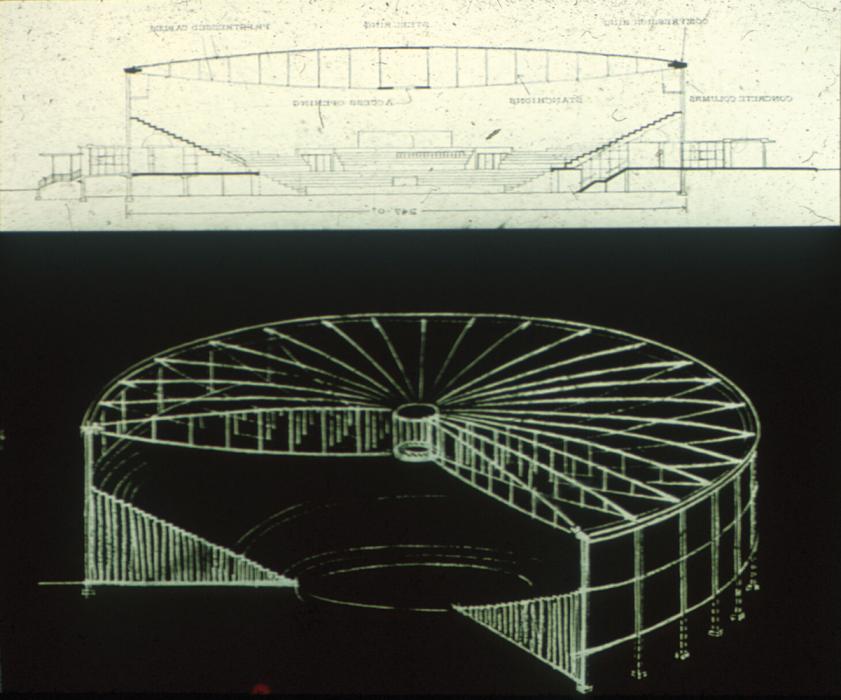
Adirondack Bank Center
The inventive structural design of this multipurpose arena solved a number of challenging design problems and became a model for many later buildings.
Lead Contact

Project Details
The predecessor to modern stadium dome designs
The inventive structural design of a 3,815-seat multipurpose arena solved a number of challenging design problems and became a model for many later buildings. Built on a tight site with poor soil conditions, the arena needed an extremely light roof system. As a result, Lev Zetlin, founder of the firm that became Thornton Tomasetti, designed the first “double-bicycle wheel” cable-suspended roof for the arena.
In 2011, the American Society of Civil Engineers named the Utica Memorial Auditorium as a National Historic Civil Engineering Landmark. Today the facility hosts various sporting events, including hockey and indoor soccer, and concerts and other entertainment.
We provided structural design services to Gilbert L. Seltzer for this arena which opened in 1960.
Highlights
- Two layers of pre-tensioned cables span between an outer compression ring and a central tension ring. This configuration eliminates flutter and facilitates roof drainage, while the space between layers accommodates lighting and mechanical equipment.
- The 250-foot clear span also provided a column-free interior with unobstructed views.
- The entire roof cost less to build than a conventional roof because it could be prefabricated and erected in just a few days.
- This system was subsequently used in many structures, including Madison Square Garden. It also serves as the basis for modern “cable dome” systems.
- In 2013, we returned to the auditorium and used our portable 3D laser scanner to create a detailed record of the 54-year-old structure’s condition. We analyzed the structure to discover how the roof interacts with the façade.











